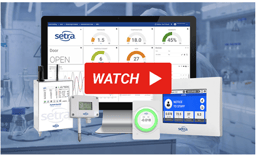It is commonly assumed that organizations need to choose between NIST and ISO. Neither is better than the other and can both be used simultaneously.
What is NIST?
The National Institute of Standards and Technology (NIST) is a non-regulatory federal agency that develops measurement standards and technology. NIST creates and certifies standard reference materials (SRMs) which are used for calibration, verifying accuracy, and tracing measurements. For each SRM, NIST has a Certificate of Analysis.
For NIST Certification, a product is tested against an SRM to be sure it meets the requirements. After passing this testing, the product can be sold with a NIST Certificate. There are 3 types of NIST Certification. The first is a NIST Certificate of Calibration, which indicates the product was found to be within its accuracy tolerance or was adjusted to be within said tolerance. The second is a NIST Certificate of Compliance, which means the product’s test results were within its stated tolerance but there is no way to adjust the unit. The third is a NIST Traceable Certificate, which is when the product has been tested against an item with a traceable paper trail back to a NIST SRM.
NIST Certification does not stand for a recommendation or endorsement of a product. It can also add up to several hundred dollars onto a product’s price. However, a certified product has a distinct advantage. A NIST Certificate means the product has been thoroughly tested for accuracy.
Many of Setra’s products can be provided with NIST-Traceable calibration certs. Depending on the product, this certification may be standard or optional. These products include but are not limited to:
What is ISO?
The International Organization for Standardization (ISO) is a non-governmental organization that develops industrial standards for around the world. Due to their non-governmental status, the standards they create are voluntary and ISO cannot enforce them. However, other regulatory bodies can adopt ISO standards and enforce them.
Depending on the industry, compliance with ISO can be required or electively followed. Meeting ISO’s requirements is a common indicator of a quality product or service. In many cases, ISO requires products to be NIST Certified.
The most common ISO standards are their generic standards. These types of standards are applicable to a variety of organizations and applications. The farthest-reaching ISO generic standards are ISO 9000 and ISO 14000. ISO 9000 focuses on quality management, while ISO 14000 focuses on environmental management.

Setra’s products can help meet ISO 14644, which is the standard focusing on air cleanliness in cleanrooms related to the concentration of airborne particles. Our particle counters measure non-viable particles in the air, and our differential pressure transducers monitor the pressure in the cleanroom to indicate whether or not additional particles can enter the space. Setra’s CEMS Software brings the data from these sensors into one central location. With data monitoring, alerts and alarms, and data exports for audits and inspections, you can ensure your cleanroom meets ISO standards.



